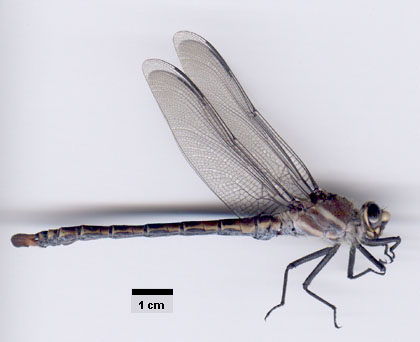Value of the Swamp
 |
 |
 |
 |
 |
 |
 |
 |
 |
 |
|
Habitat for Endangered Species |
|||||
| Wingecarribee swamp had the highest known species and habitat diversity of any peatland swamp in Australia. This included approximately 120 higher plant species. The Wingecarribee Swamp was also home to the following endangered species:
Extract from Directory of Important Wetlands in Australia 1996: It is an outstanding freshwater upland mire containing a complex of vegetation types and diverse flora... Wingecarribee Swamp contains a number of rare and significant plant species, including the threatened herb Gentiana wingecarribiensis (Ne) which is endemic to the site... The rushland dominated by Lepyrodia anarthria is one of the richest and most extensive of this type of community in Australia.
According to the National Parks and Wildlife Service: More information about the Giant Dragonfly Two rare and threatened herbaceous plant species, Prasophyllum uroglossum - Leek Orchid and Gentiana wingecarribiensis - Swamp Gentian have been found at the swamp. They are both Schedule l species on the Threatened Species Conservation Act. Also a native gum-tree, Eucalyptus macarthurii - Paddy's River Gum or Camden Woollybut, of very restricted distribution occurs in the near vicinity of the swamp edge. Information about Prasophyllum uroglossum - Leek Orchid can be downloaded at http://www.npws.nsw.gov.au/wildlife/thr_profiles/prauro.pdf Information about Gentiana wingecarribiensis - Swamp Gentian can be downloaded at http://www.npws.nsw.gov.au/wildlife/thr_profiles/gentwing.pdf References: Photo of Petalura giganteaby John Trueman, http://www.anu.edu.au/BoZo/trueman/labsite/petalura.htm, 2000 (More photos and info available at this site). Roslyn Blackley, Samantha Usback and Kate Langford, eds, Directory of Important Wetlands in Australia (ed.2.) Australian Nature Conservation Agency, Canberra,1996. National
Parks and Wildlife Service, Threatened Species Profiles,
http://www.npws.nsw.gov.au/wildlife/thr_profiles/ ANZECC,
Listed Flora Species and Subspecies, 'Species that are endangered',
http://www.environment.gov.au/bg/wildlife/lists/ National Parks and Wildlife Service, Submission to the Mining Wardens Inquiry into Possible Renewal of Mining Leases for the Extraction of Peat from Wingecarribee Swamp, 1997, Exhibit 23, p. 7. Geoffrey Hope, Senior Fellow, ANU, Submission to the Mining Wardens Inquiry into Possible Renewal of Mining Leases for the Extraction of Peat from Wingecarribee Swamp, 1997, Exhibit 34.
|
|||||
Home
| Story in Brief
| About Peatlands
| Value of Swamp
| History of the Swamp
Mining Impacts
| Role of Government
| Collapse of the Swamp
References | Glossary
| Site Map | Credits/Contacts
http://www.herinst.org/wingecarribee/
